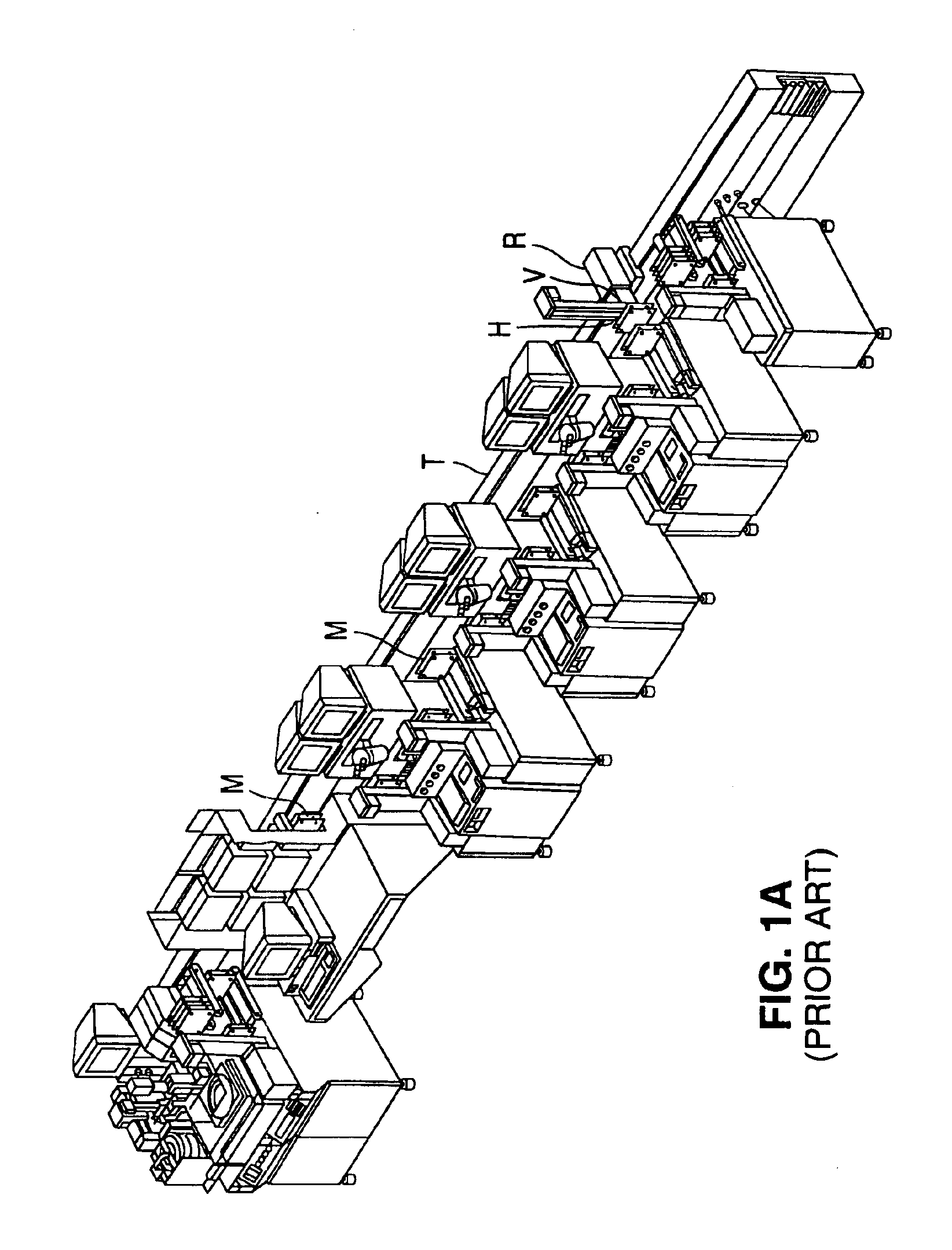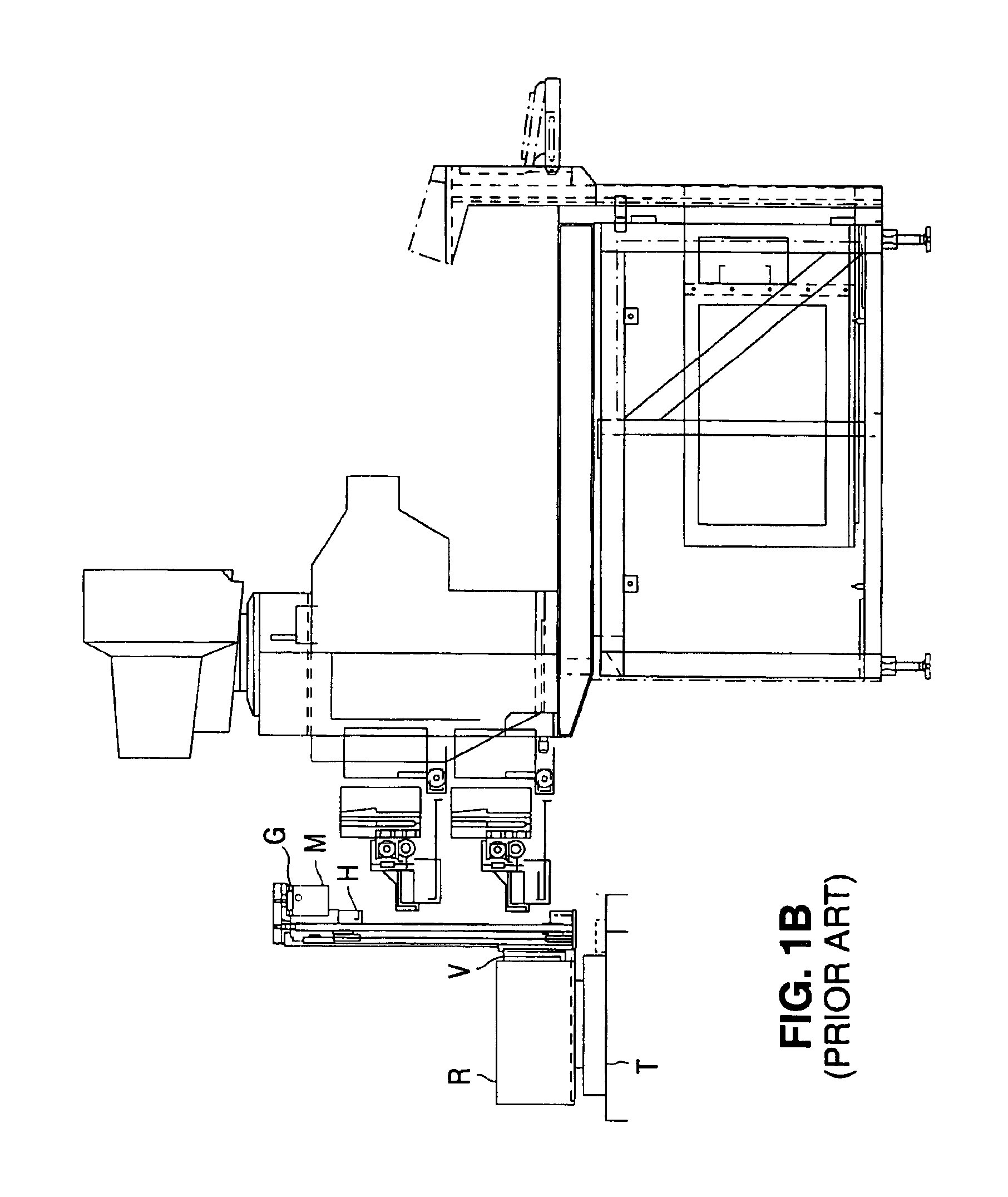Material transport method
a material transport and material technology, applied in the direction of charging manipulation, lighting and heating apparatus, furniture, etc., can solve the problems of limiting the usefulness of materials, limiting the use of materials, and many drawbacks of the above-described system
- Summary
- Abstract
- Description
- Claims
- Application Information
AI Technical Summary
Benefits of technology
Problems solved by technology
Method used
Image
Examples
Embodiment Construction
[0040]The material transport system (MTS) of the present invention is designed to transport materials or payloads to various locations in a plant, factory, or other common facility (hereinafter “factory”). The materials to be transported may be any materials or payloads, such as those that can undergo automatic processing and / or automatic treatment. Typically, the materials and payloads include semiconductor chip filled magazines (hereinafter “magazines”). As will be appreciated from the description that follows, with no intent to limit the invention thereby, the MTS is an overhead or ceiling mounted system for transporting magazines to FOL, BOL, and test equipment, such as die bonders, and / or wire bonders for establishing electrical connections on chips; continuous furnaces for the curing of plastics; and devices for the intermediate storage of the chips, backgrinders, tape cutters, and trim and form tools (hereinafter collectively “processing tools”). As an overhead system, the MT...
PUM
 Login to View More
Login to View More Abstract
Description
Claims
Application Information
 Login to View More
Login to View More - R&D
- Intellectual Property
- Life Sciences
- Materials
- Tech Scout
- Unparalleled Data Quality
- Higher Quality Content
- 60% Fewer Hallucinations
Browse by: Latest US Patents, China's latest patents, Technical Efficacy Thesaurus, Application Domain, Technology Topic, Popular Technical Reports.
© 2025 PatSnap. All rights reserved.Legal|Privacy policy|Modern Slavery Act Transparency Statement|Sitemap|About US| Contact US: help@patsnap.com



